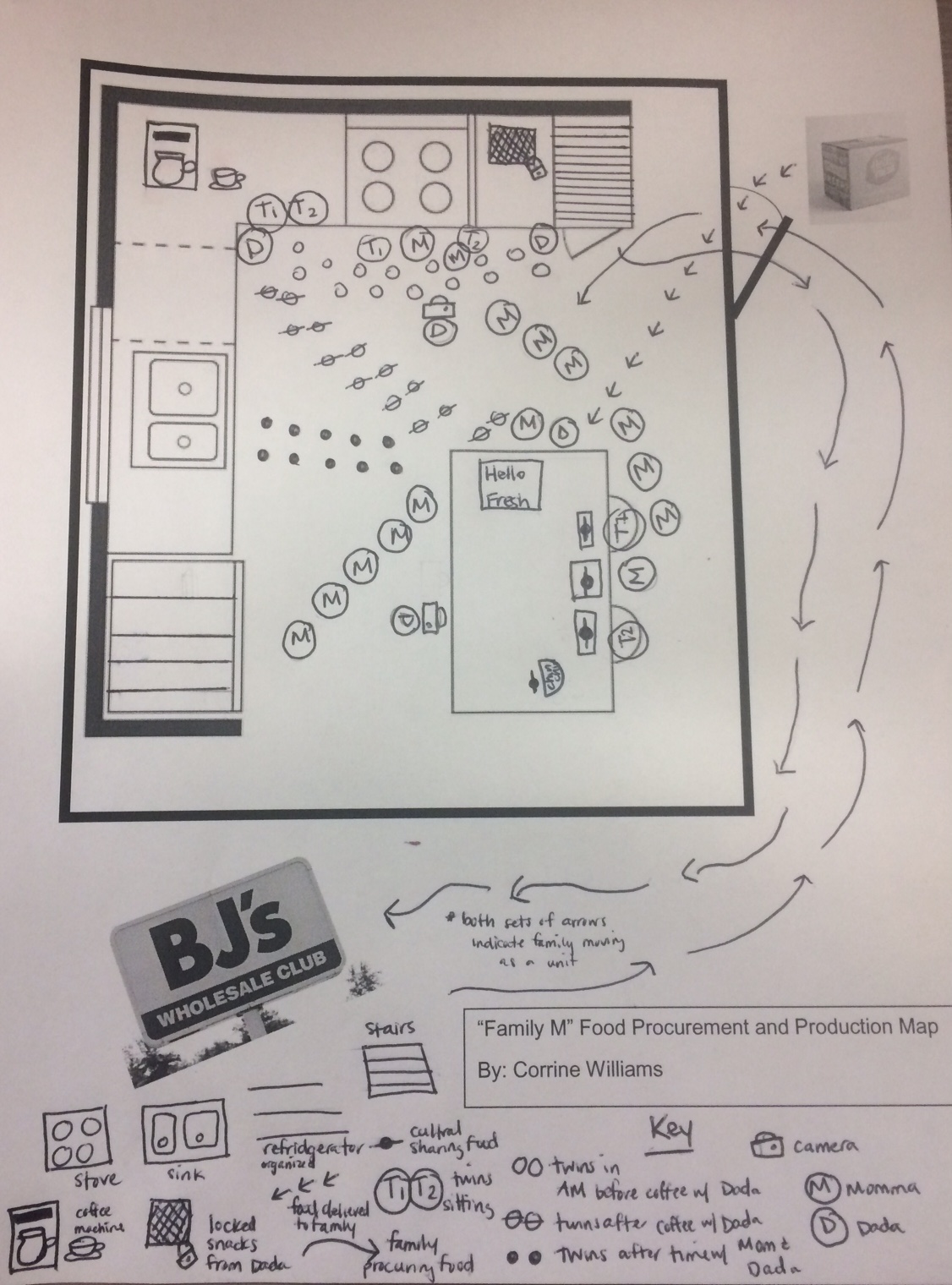Food Mapping of Mini Social Media Mavens: Exploring YouTube with an Ethnographic Eye
Gastronomy student Corrine Williams provides another example of food mapping in our next post in our series “Perspectives from Anthropology of Food.”
In the age of the internet, social media seems to gain more cultural significance every second. Images have always been integral to media, and with Instagram’s popularity it’s clear people enjoy the content. The grouping and context are important for the meaning embedded in the images as well. Anthropologists and ethnographers have known this for decades and have used images that have been submitted by participants in studies to make connections about individuals’ realities and the larger collective cultural beliefs. Food maps are another tool that track food procurement and production of food. With social media the content is self propagated and can be the subject of scholarly study. People are performing these carefully constructed identities on various platforms to qualify and classify themselves, intentionally or unintentionally. In Food and Social Media: You are What You Tweet (2012), author Signe Rousseau states that food’s popularity has only been amplified by social media, bringing people together in new ways.
Using social media, YouTube more specifically, I studied a family that video blogs and applied my budding ethnographic eye to analyze their foodways. The food map of the ‘M’ family shown is an abstract representation of their home and the gendered space and labor within the household. Five videos are food-focused. One of the main videos showcasing the family cooking meals at home is a sponsored video by Hello Fresh; its effect is to show how the company makes cooking so easy that even ‘Dada’ can do it. The title of the video, “Dad tries to cook for twins,” insinuates that he is not going to be successful. In contrast, the title of the video with the mother at the helm is “The girls cook for the baby,” a more declarative positive, and a gendered message. This communication between the parents and the twins is a fun way to engage the girls, get good reactions for the camera, and help the girls learn, but it also reinforces gendered knowledge. In another video when the twins are being interviewed, there is a hanging question, and the response is my dad doesn’t know how to cook, only my momma cooks, my sister cooks and I cook.

Dada can make coffee, which he does with the girls each morning. He uses the time while the coffee is brewing to teach the girls about various things; in the video, he shows them octopi. The title of that video is “Father teaches daughters how to make memories.” Coffee has a powerful smell, so the father is distinguishing himself as a coffee drinker, in opposition to his wife as a tea drinker. He is also establishing himself in the girls’ memories through the sensory activities of smelling the coffee as it brews.
Momma is doing her best to pass on an embodied knowledge and sensory memory too. She is communicating the importance of their shared cultural food. The three ladies prepare a Nigerian snack, chin chin, together. It is interesting to see that both parents have separate food production times with the girls; through these actions, each parent is trying to make memories, but also impart some of their identities onto the girls because they are half of each parent. The parents are establishing traditions and structure with food to make memories and allow the girls to express themselves and explore their unique multifaceted identity.

On the surface, this family is making meals and memories and capturing these activities on video, but looking deeper, they are using media as a social construction, an action that speaks volumes about their values and how they choose to represent themselves to the world wide web. I really enjoyed this project. It encouraged me to look at everyday life and pull apart the layers of significance to understand the connections. Perhaps I will start a food vlog and talk about other food vlogs in this context. With my new mindset, I’m sure I will subscribe to the same themes and methods that I analyze other blogs for, and hopefully people will subscribe to my vlog to perpetuate this cycle. In the world of YouTube, videos speak louder than words and we should take them with a grain of salt.
Works Cited
Rousseau, Signe. 2012. Food and Social Media: You Are What You Tweet. Lanham, MD: Altamira Press/Rowman and Littlefield.